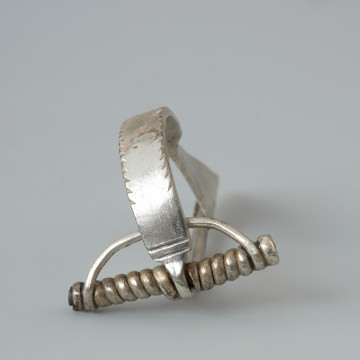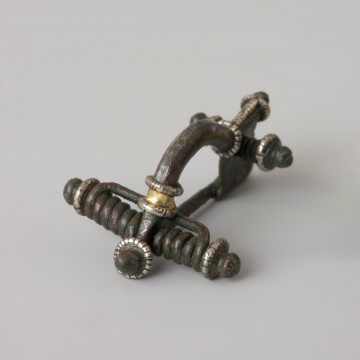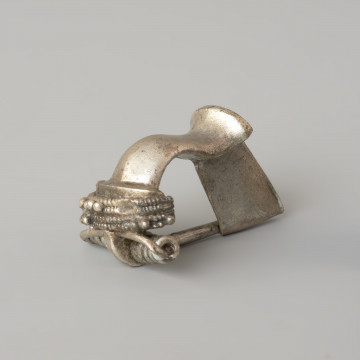
Tortoiseshell buckle
201 — 299
National Museum in Szczecin
Part of the collection: Antiquity
Fibulae are one of the most diverse groups of ornaments from the Roman period (1st-4th centuries). Based on the differences in their design and decoration, they were divided into a number of distinct variants, occurring in specific time periods. As such, they are elements that determine the dating of such discoveries as graves. The type of fibulae that is presented here was in use mainly in the 2nd century. At that time, the eastern part of Western Pomerania was inhabited by the Germanic people of the Wielbark culture. It is one of the two major archaeological cultures from the Roman period from the Polish lands, next to the Przeworsk culture occupying the areas to the south of it. However, should the people living near Żelechów be associated with the Wielbark culture? The range of its settlement in the 1st-3rd centuries systematically shifted towards the Oder river, and the area of today’s Gryfino and Pyrzyce poviats was inhabited by smaller groups of people, with their own burial practices, different from those cultivated in the Wielbark culture. The key difference was the placement of weapons in the graves of dead warriors.
Bartłomiej Rogalski
Author / creator
Dimensions
cały obiekt: height: 1.6 cm, width: 3.1 cm
Object type
pin (fastener)
Technique
casting
Material
bronze
Creation / finding place
Owner
Muzeum Narodowe w Szczecinie
Identification number
Location / status

201 — 299
National Museum in Szczecin

National Museum in Szczecin

National Museum in Szczecin
DISCOVER this TOPIC
National Museum in Szczecin
DISCOVER this PATH
Educational path